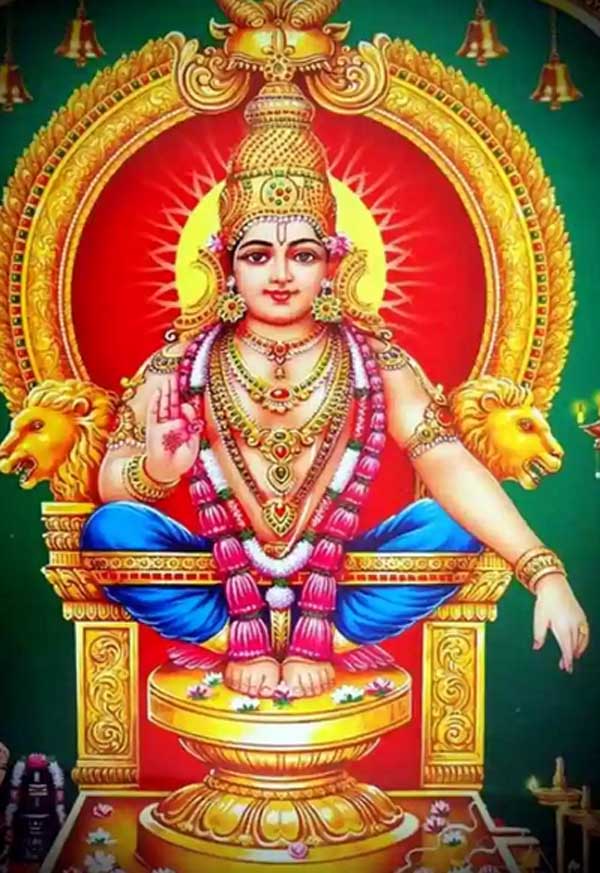Ayyappa, also known as Iyyappan or Ayyappan, is a revered deity in Hinduism, particularly in the South Indian states of Kerala, Tamil Nadu, and Karnataka. The sitting posture of Ayyappa in iconography holds symbolic significance, as is the case with many Hindu deities. However, it's important to note that depictions and interpretations may vary across different traditions and regions. Here are some common symbolic elements associated with Hariharasudhan Ayyappa's sitting posture:
Meditative Pose (Padmasana or Sukhasana): Ayyappa is often depicted sitting in a meditative pose, which signifies inner peace, concentration, and spiritual contemplation. This reflects the idea of a deity who is deeply immersed in meditation and self-realization.
Yogic Symbolism: Ayyappa is considered a yogi, and his
posture often reflects yogic symbolism. The various yogic poses emphasize
control over the body and mind, representing the disciplined and focused nature
of Ayyappa's worship.
Asceticism: Ayyappa is often associated with the life of an
ascetic. His sitting posture may convey a sense of renunciation and detachment
from worldly desires. The ascetic lifestyle is seen as a means to attain
spiritual growth and liberation.
Unity of Shiva and Vishnu: Ayyappa is believed to be the son
of Mahadeva Shiva and Bhagavan Vishnu in the form of Mohini. The sitting
posture may symbolize the unity or synthesis of these two major deities within
Ayyappa.
Harmony and Balance: The balanced and composed sitting
posture of Ayyappa signifies harmony and equilibrium. This can be interpreted
as a representation of the balance between various aspects of life, such as
duty and devotion, material and spiritual pursuits.
Focus and Determination: Ayyappa is associated with the idea of dharma (righteous duty) and the pursuit of spiritual goals. The sitting posture may symbolize focus, determination, and single-minded dedication to the path of righteousness.
It's essential to keep in mind that interpretations of symbolism can vary, and individuals may have different perspectives based on their cultural and religious background. Additionally, the specific depiction of Bhagavan Ayyappa's sitting posture may vary among different artists and traditions within the broader Hindu community.
